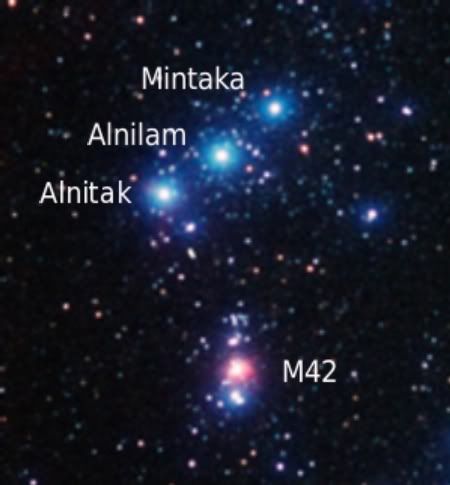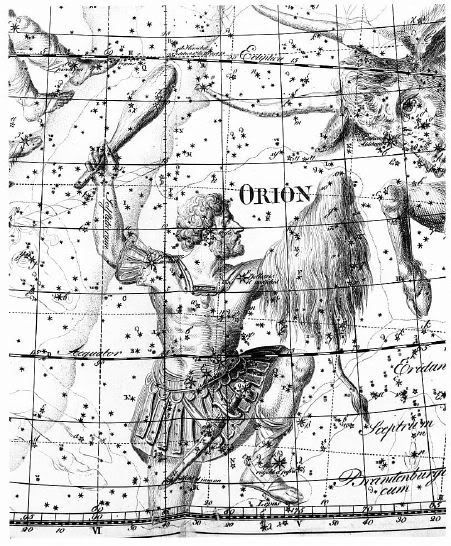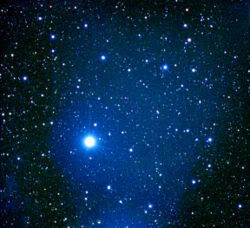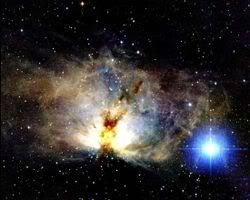The three stars that make the Belt of Orion (delta, epsilon, and zeta Orionis) are known by various cultures by many different names. Western culture passes the name of “Orion’s Belt” down to us.
| Arabic terms include Al Nijād ‘the Belt’, Al Nasak ‘the Line’, Al Alkāt ‘the Golden Grains or Nuts’ and, in modern Arabic, Al Mīzān al H•akk ‘the Accurate Scale Beam’. Wiki |
From the Southern Hemisphere Orion is, of course, oriented differently, and different cultures there as in the Northern Hemisphere have different appelations for the constellation. For example, the stars of Orion’s belt are called Drie Konings (Three Kings) in Afrikaans speakers of South Africa Wiki, probably related to the name that appeared on 17th and 18th century Dutch star and navigational charts.
|
In Chinese mythology they were also known as The Weighing Beam.[1] The belt was also the Three Stars mansion (traditional Chinese: 參宿 simplified Chinese: 参宿 pinyin: Shēn Xiù), one of the Twenty-eight mansions of the Chinese constellations. It is one of the western mansions of the White Tiger.
In pre-Christian Scandinavia, the belt was known as Frigg’s Distaff (Friggerock) or Freyja’s distaff[2]. Similarly Jacob’s Staff and Peter’s Staff were European biblical derived terms, as were the Three Magi, or the Three Kings. Väinämöinen’s Scythe (Kalevala) and Kalevan Sword are terms from Finnish mythology.
The Seri people of northwestern Mexico call the three belt stars Hapj (a name denoting a hunter) which consists of three stars: Hap (mule deer), Haamoja (pronghorn), and Mojet (bighorn sheep). Hap is in the middle and has been shot by the hunter; its blood has dripped onto Tiburón Island. Wiki |
The star’s along Orion’s belt can be used to locate two other notable stars of the night sky, Sirius and Aldebaran. Sirius, along the line (almost directly) to the southeast is the brightest star in the sky. Aldebaran, along the line in the opposite direction is the 13th brightest star. |
|





